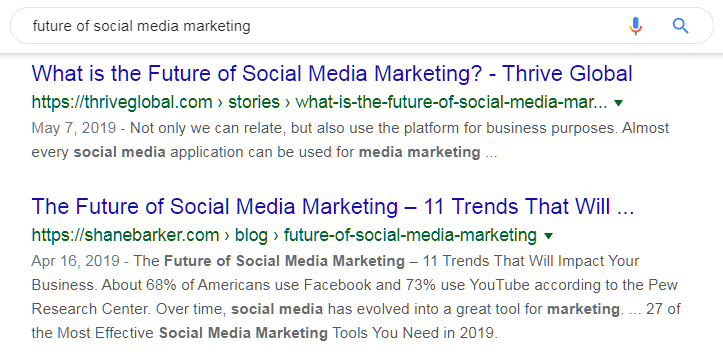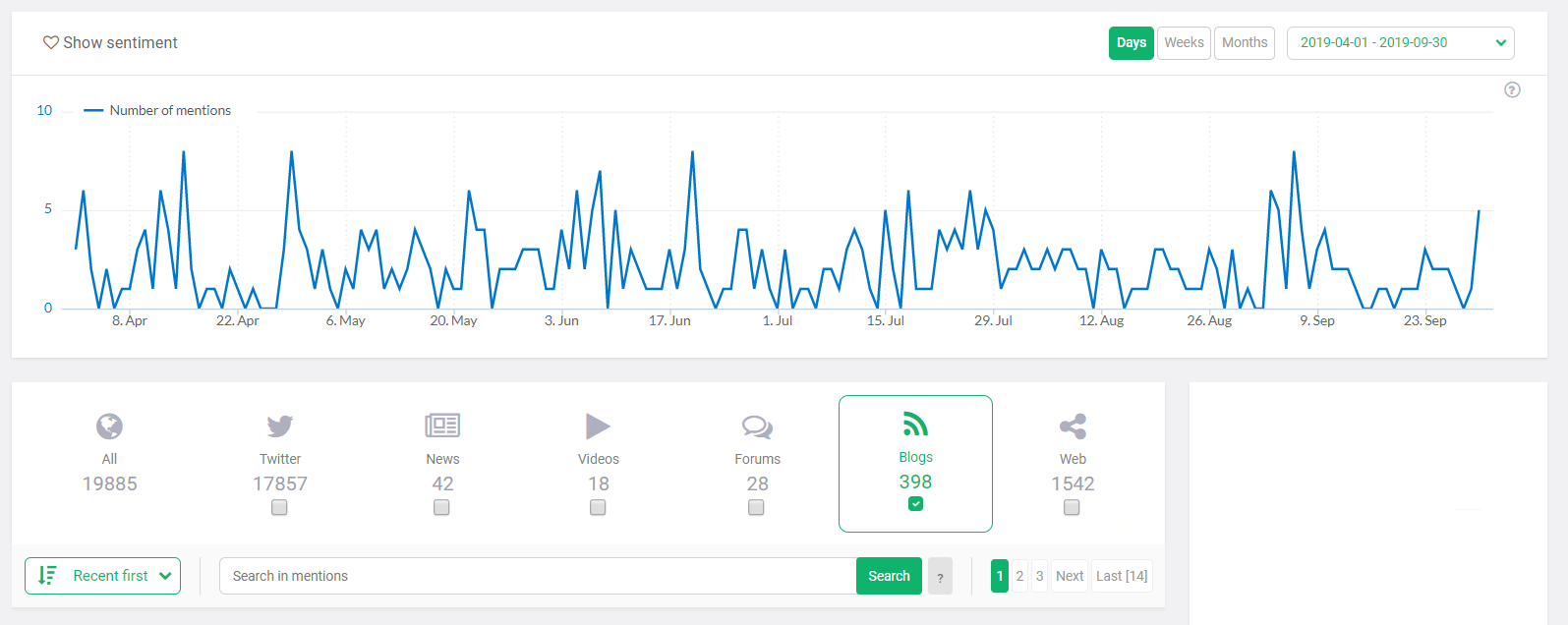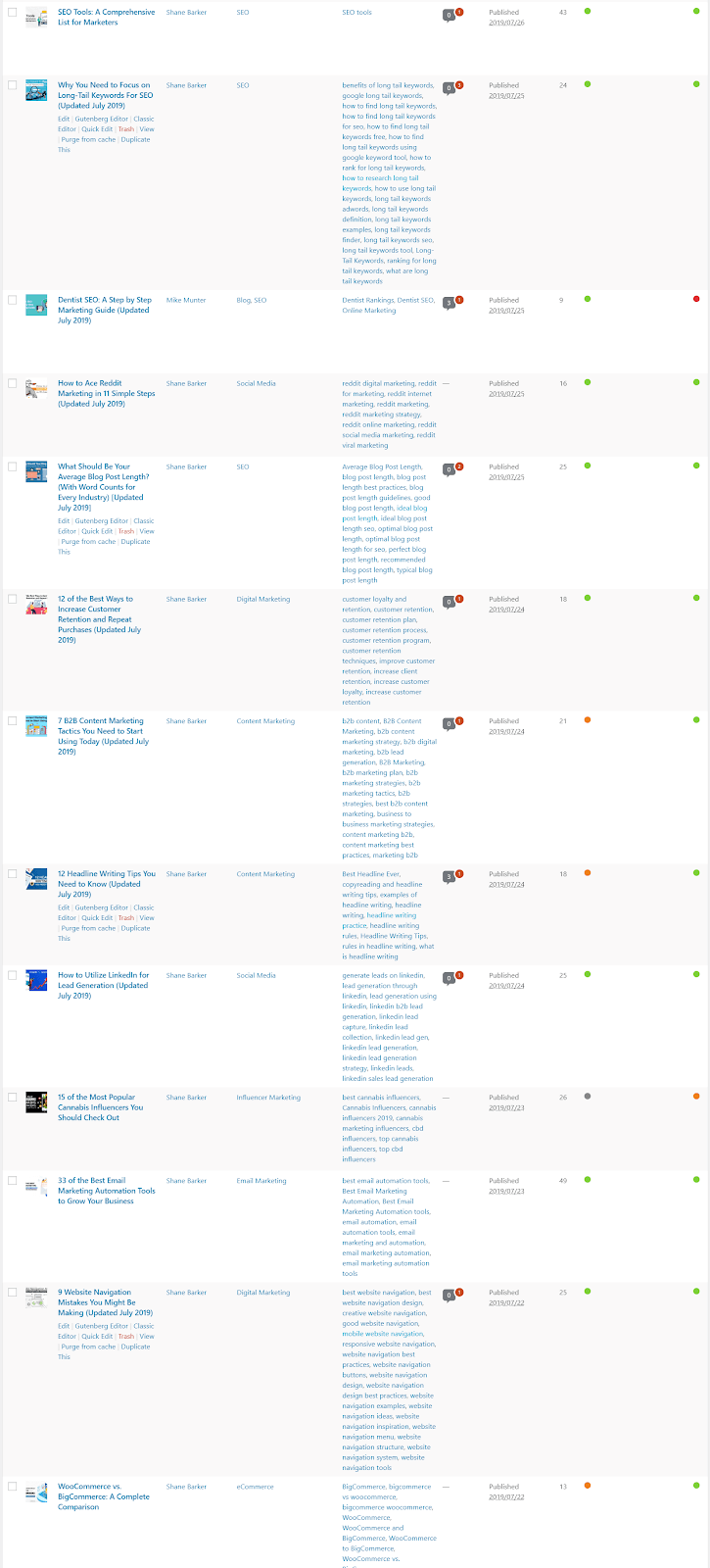With a lot of people publishing high-quality content every day, it’s tough out there for SEO professionals and content marketers. It is nearly impossible to make your content stand out in the oversaturated market. And winning a top SERP position remains a challenge.
However, strategically ranking for a target keyword is still very much possible.
How?
You need to follow the right process and implement the right SEO strategies.
In this SEO case study, I’m going to share exactly how I ranked 1800+ keywords on the first page of Google search results.
But before I discuss my SEO strategy that is crushing it right now, let’s take a look at the results I achieved using it.
Table of Contents
Results: Boost in Keyword Rankings
I witnessed a significant increase in the number of keywords ranked on the first page of Google search results in just six months (April 2019-September 2019).
Here’s the organic research report of ShaneBarker.com by SEMrush that clearly shows this significant boost in my SERP positions.

April 2019: 1640 Keywords Ranked on Page 1 of Google
In April 2019, I had 1640 keywords ranking on the first page of Google search results. Out of these, 495 keywords ranked among the top 3 positions in the SERPs.
In this SEO case study, I’ll show you how these numbers grew in six months.
Image via SEMrush
September 2019: 3461 Keywords Ranked on Page 1 of Google
By September 2019, my SERP positions improved significantly with 3461 keywords ranked on the first page of Google search results. Out of these, 1027 keywords ranked among the top 3 positions in the SERPs.
Image via SEMrush
Want to learn how my SERP positions made this jump?
I’ll answer this question and more in this SEO case study.
What Are the SEO Strategies That Helped Me Rank 1800+ More Keywords in 6 Months?
In this SEO case study, I’m going to share the strategies that helped me rank for various keywords.
Let’s take a look at the step-by-step process I followed:
1. Focus on User Intent
One thing you should learn to level up your SEO game is to focus on what your audience wants.
Why?
It is more important than ever to create content that addresses users’ search intent and answers their questions. In fact, that’s the easiest way to achieve higher rankings and positions in the SERPs.
Focusing on User Intent + Optimizing for Search Engines = Achieving Higher SERP Rankings
You should remember that Google has been evolving their search algorithms to provide better solutions to users and make them happy.
What does that mean for you?
It means that if you want to boost your SERPs positions, you need to help Google make their users happy by focusing on user intent.
But wait…
What is user intent?
In simple words, focusing on user intent means that you should publish content that searchers will like to see the most when they search for a relevant keyword or phrase on Google.
For example, if you search for “future of social media marketing,” you’re probably looking for statistics, figures, trends, and strategies that can impact social media marketing in future, right?
And my article on, “The Future of Social Media Marketing – 11 Trends That will Impact Your Business,” answers that perfectly.
That’s how it successfully ranked in the top 3 positions in the SERPs.
Image via Google
This is how optimizing your content for user intent can help you achieve higher search results rankings.
2. Utilize TF-IDF Formula
Have you ever used top-ranking content by other websites to improve your SERP rankings?
No… this isn’t about using the skyscraper technique.
Let’s take a look at how I analyzed the content of top-ranking articles and used it to optimize my content for higher search rankings.
My content successfully outperformed that of my competitors using TF-IDF.
TF-IDF is a combination of two terms that include:
- Term Frequency (TF) = (Number of times a keyword appears in an article) / (Total word count of the article)
- Inverse Document Frequency (IDF) = log (Number of articles) / (Number of articles containing that keyword)
In simpler terms, TF-IDF can help you see how frequently the keyword appears in an article compared to the average use frequency of that keyword in other articles on the web.
This SEO technique helped me identify unique terms related to the topic covered in my posts.
Then what?
I naturally incorporated them into my content to help Google understand which of the users’ questions does my article answer.
As you’ve seen in the results section of this SEO case study, using TF-IDF has helped me achieve remarkable results.
3. Update Already-Published Content
Publishing high-quality, fresh content every day demands a lot of effort.
How do I keep up with my posting frequency?
I write fresh content and I also take the time to update my previously-written content.
Doing content upgrades has not just helped me publish more frequently, it has also helped me ensure that the content on my blog is up-to-date.
You’ll be surprised to know that updating existing content also helped my old posts get indexed again and rank better in the SERPs.
Check out the screenshot below to see how my updated posts ranked on the first page of Google search results.
Image via SEMrush
4. Get More Brand Mentions and Backlinks
Building more backlinks is an effective SEO technique that finds its place in nearly all SEO case studies.
But how do I build backlinks?
I frequently contribute to authoritative websites in my niche such as Forbes, Social Media Today, and 100 more. This helps me reach and engage new audiences and build high-quality backlinks.
Here is a screenshot that shows an increase in the number of backlinks I received between April 2019-September 2019:
Image via SEMrush
Along with guest posting, I also participated in expert roundups, interviews, conferences, webinars, and podcasts to gain more exposure. This strategy helped me get more brand mentions over time.
Here’s a report that showcases my brand mentions over the period of those six months:
Image via Brand24
5. Distribute Content
Publishing great content isn’t enough. You need to ensure that your content reaches the right people.
That’s why I make it a point to syndicate my content on social media platforms and content curation sites such as Medium, Quora, and LinkedIn.
How else can you distribute your content?
In addition to syndicating my own content, I also contribute to other Medium Publications such as Publishous, Better Marketing, and The Writing Cooperative.
6. Experiment with Content Frequency and Volume
As I said earlier in this case study, creating high-quality content isn’t enough. You need to be consistent in your approach.
I already ensured that there was something getting posted every day. But, during this period, I decided to fill my weekly content calendar with more fresh topics and content upgrades.
I published around 13 posts a week on ShaneBarker.com that included:
- 1 educational blog post
- 9 content upgrades
- 3 weekly roundups
Here’s a snippet of how my WordPress dashboard looked like in July 2019 (with a number of posts published/updated back-to-back):
Image via WordPress
FAQs
Q1. How do you do SEO keyword research?
A. You can either use SEO tools or conduct keyword research manually. If you use a tool, you can simply type a starting keyword or topic and the tool will give you a list of related keywords.
However, if you want to do keyword research manually, then the best place to start is Google Search. Type a search phrase and then look at the “related searches” or “people also ask” section to find related search terms or keywords.
Q2. What is a keyword in SEO (with example)?
A. When someone searches for something in the search engines, they use a search query to do so. A keyword is basically the most important words or phrases in that search query. In the context of SEO, these keywords are what marketers use in their content to rank for relevant search queries.
For example, let’s pretend that a user searches for, “who are the best digital marketing consultants?” In this case, all relevant content that has used the keywords “best digital marketing consultants” or “digital marketing consultants” will appear in the search results. However, only the best content gets to rank on the first page.
Q3. Where can I get SEO keywords for free?
A. You can use any of the free SEO tools by Google to get SEO keywords, but Google Search Console is one of the best and simplest. If you are looking for question-type keywords, then AnswerThePublic is also a good tool.
Q4. How do I find my competitor's keywords?
A. Most SEO or keyword research tools provide the option to research your competitors. You can enter your competitors’ URLs and these tools will show you all the keywords that their websites are ranking for.
Q5. What is the best keyword search tool?
A. Google Search Console and Google Keyword Planner are two of the best keyword search tools that are available for free. In the case of paid tools, Semrush and Ahrefs are two of the most popular tools for this purpose.

Q6. What is a good keyword difficulty score?
A. There is no definitive guideline on what keyword difficulty score is good as it varies from case to case. In general, a higher keyword difficulty score means that it would be difficult to rank for it and vice versa. So, it really depends on you and how ambitious your goals are.
Ideally, you should try to compete for medium to high difficulty keywords, instead of going for the highest-difficulty keywords.
Q7. What is the easiest way to rank for keywords?
A. There are really only two important things to consider here: relevant content and keyword optimization. First, create high-quality, useful content around your main keyword, keeping the search intent in mind. Second, make sure to use the keyword throughout your content and maintain a good keyword density.
Q8. How long does it take to rank for keywords?
A. There is no definitive answer to this question as it varies on a case-by-case basis. If you target low competition keywords and create high-quality, optimized content, you might rank very quickly. However, in most cases, it takes at least a few months to rank for keywords.
Q9. How do I find SEO keywords for my website?
A. If you want to find out what keywords your web pages are currently ranking for, simply use an SEO tool like Semrush or Ahrefs. You simply need to enter your website’s URL and these tools will analyze your website and show you all the keywords that you rank for.
Q10. How many keywords are good for SEO?
A. Ideally, you should target at least one keyword per page to make sure that all your pages rank for the relevant keywords. You can also target 2-3 related keywords for each page, as long as there is one primary keyword and a few variations of it. Targeting multiple unrelated keywords is not good and can do more harm than good.
Ready to Grow Your Buisness?
These are some of the most effective SEO techniques that have helped me rank in the top 10 SERP positions for 1800+ keywords.
Improved search rankings helped me generate more targeted traffic to my website, build trust, and enhance my credibility in the digital marketing space.
Are you struggling to rank higher in search results?
I’m sure the strategies that I’ve discussed in this SEO case study can help you achieve remarkable results too, just like they’ve helped me.
If you want help improving your search presence, please feel free to take advantage of my SEO services.









